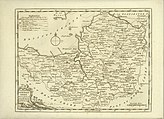Portal:Somerset/Selected article/30
The history of evidence of human occupation in Somerset began in prehistoric times with hand axes and flint points from the Palaeolithic era being uncovered, and a range of burial mounds, hill forts and other artifacts dating from the Mesolithic era. The oldest dated human road work in Great Britain is the Sweet Track, constructed across the Somerset Levels with wooden planks in the 39th century BC.
Following the Roman invasion of Great Britain the mining of lead and silver in the Mendip Hills provided a basis for local industry and commerce. Bath became the site of a major Roman fort and city, the remains of which can still be seen. During the Dark Ages and Saxon period Somerset was the scene of battles first with the Britons and later with the Danes and was ruled by various kings of Wessex, succeeded by kings of England. Following the defeat of the Anglo-Saxons by the Normans in 1066, castles were built in Somerset.
Expansion of the population and settlements in the county continued during the Tudor and more recent periods. Agriculture and coal mining expanded until the 18th century, although other industries declined during the industrial revolution. In modern times the population has grown, particularly in the seaside towns, notably Weston-super-Mare. Agriculture continues to be a major business, if no longer a major employer because of mechanisation. Light industries take place in towns such as Bridgwater and Yeovil. The towns of Taunton and Shepton Mallet manufacture cider, although the acreage of apple orchards is less than it once was. (Full article...)

